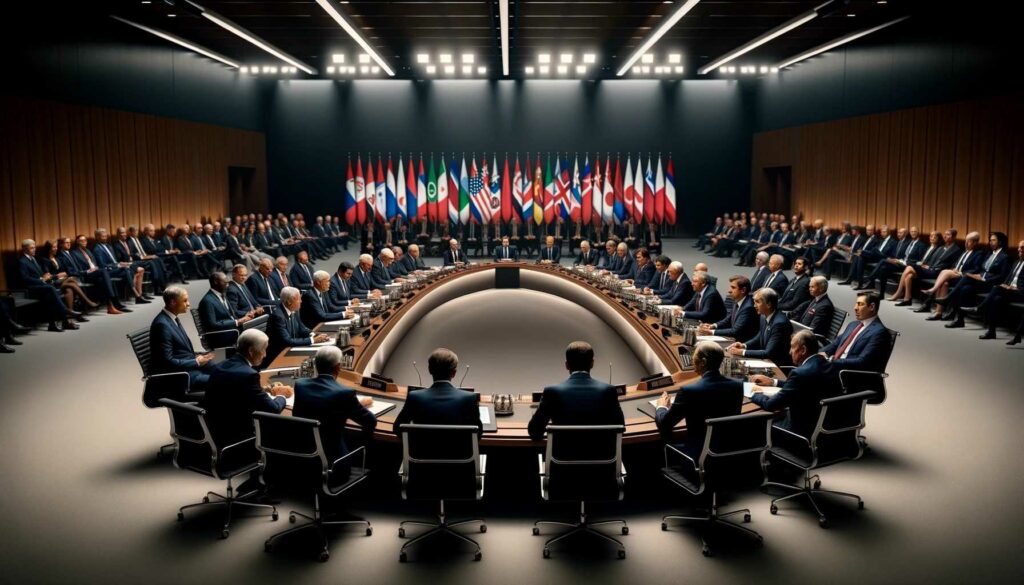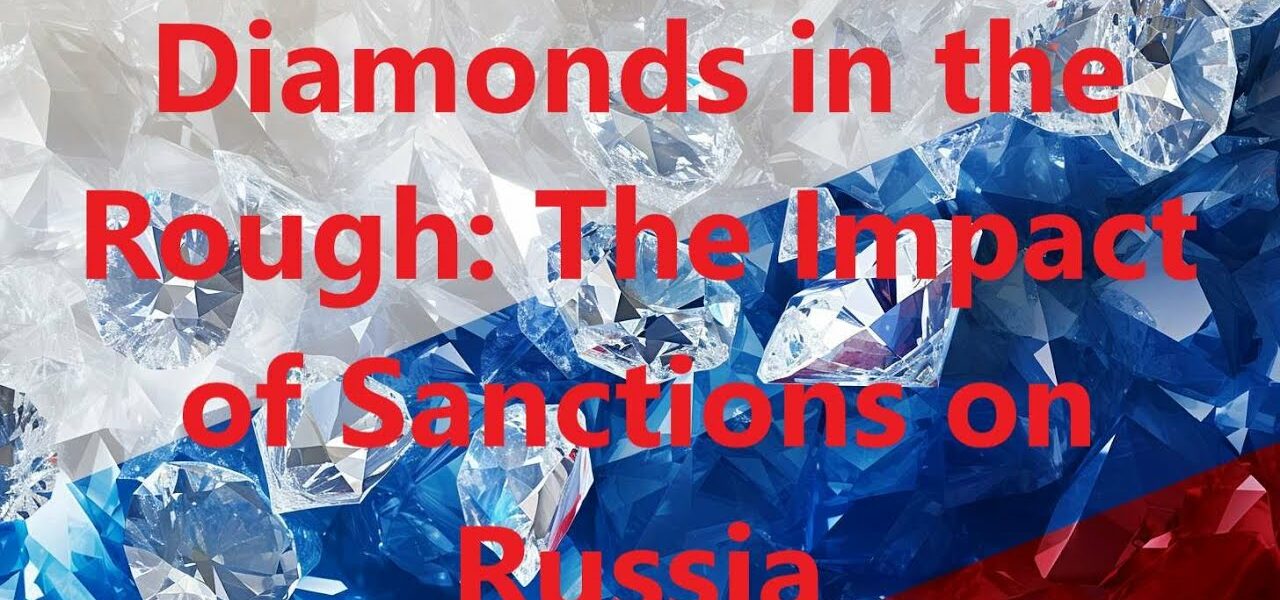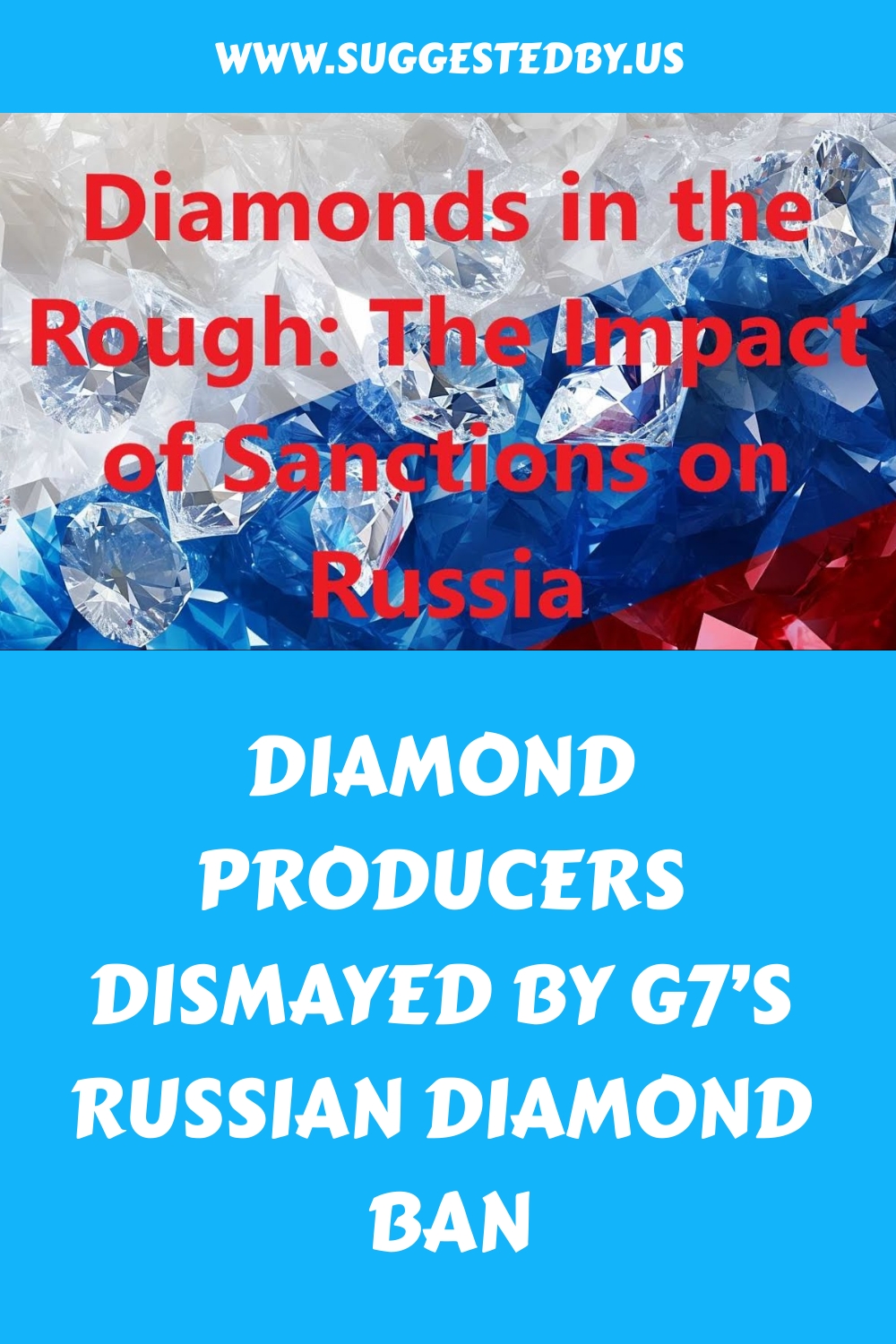The World Federation of Diamond Bourses (WFDB) has issued a public statement urging the G7 nations and the European Union to reconsider the potentially irreversible market consequences of the Russian diamond ban. This ban has been imposed as part of broader sanctions targeting Russian diamond transactions in efforts to diminish Moscow’s revenue streams that support its military activities in Ukraine. Russia stands as the leading global supplier of unprocessed diamonds in terms of volume.
The WFDB has expressed concerns regarding the ban’s impact on the diamond industry, emphasizing the potential challenges across logistical, operational, and financial dimensions. Leaders in the industry are actively voicing their apprehensions about the ban’s repercussions, particularly highlighting disruptions that could arise within industry operations, including concerns about supply chain bottlenecks.
Moreover, the ban’s implications extend beyond logistical challenges to operational inefficiencies and financial uncertainties. The sudden alteration in diamond sourcing due to the ban could lead to operational disruptions, affecting industry productivity and processes. Financial worries also loom large, with uncertainties surrounding the ban’s economic impact on the diamond market, potentially straining the financial stability of industry stakeholders.
Article Contents
Concerns over Market Outcomes Due to the Russian Diamond Ban
The recent ban on Russian diamonds has ignited concerns within the diamond industry regarding potential market outcomes. The World Federation of Diamond Bourses (WFDB) has issued warnings highlighting the possible challenges that may arise due to this ban, encompassing logistical, operational, and financial aspects.
Industry leaders are actively expressing their apprehensions about the ripple effects of the ban, particularly focusing on the disruptions it could cause in the industry’s functioning. One major area of worry is the potential emergence of supply bottlenecks due to the ban.
The ban’s implications are not limited to logistical challenges but also to operational hurdles that industry players may have to navigate. The sudden shift in the sourcing of diamonds due to the ban could lead to operational inefficiencies, affecting the overall productivity and processes within the industry.
Financial concerns loom large as well, with uncertainties surrounding the ban’s impact on the economic aspects of the diamond market. The ban could potentially disrupt established financial models and strain the financial stability of various stakeholders within the industry.
Moreover, industry leaders are expressing worries about the possibility of unbalanced advantages accruing to certain players due to the ban. There is a fear that the ban could tilt the competitive landscape, favouring specific market participants while placing others at a significant disadvantage.
In summary, the concerns over market outcomes stemming from the ban on Russian diamonds are multifaceted and far-reaching. From logistical and operational challenges to financial uncertainties and unequal competitive advantages, the industry is bracing itself for potential disruptions and working towards mitigating the adverse effects of this significant development. Rapaport’s call for action has prompted industry leaders to closely monitor the situation and explore alternative sourcing options. The need for increased transparency and ethical practices in the diamond trade has also been underscored, as stakeholders seek to uphold responsible and sustainable business practices. Ultimately, the ban on Russian diamonds has sparked a reevaluation of the industry’s reliance on specific suppliers and a push towards diversification and risk management.
Sanctions and Certification Process
In light of recent developments, the certification process for non-Russian diamonds has become a focal point in the global diamond trade. The implementation of sanctions now requires these diamonds to be certified in Antwerp, Belgium, before they can be sent to other markets. This move aims to ensure that the origins of diamonds are verified and that they are not sourced from Russia, in alignment with the sanctions imposed by the G7 member states.
Despite the intentions behind this certification requirement, significant opposition has been from the World Federation of Diamond Bourses (WFDB). The WFDB has raised concerns about designating Antwerp as the sole verification point for non-Russian diamonds. They argue that this decision would not contribute meaningfully to the objectives set by the G7 member states. Moreover, they contend that such a designation would lead to substantial restrictions for non-Russian diamonds, potentially impacting the flow of these diamonds in the market.
The debate surrounding the certification process underscores the complexities of implementing sanctions in the diamond industry. While the goal is to prevent the trade of Russian diamonds and support the sanctions, the practical implications of such measures are nuanced. Industry stakeholders face a significant challenge balancing the need for thorough verification with the efficient operation of the diamond market.
- The certification mandate in Antwerp aims to ensure compliance with sanctions.
- Opposition from WFDB questions the effectiveness and impact of designating Antwerp as the sole verification point.
- Concerns about restrictions on non-Russian diamonds have been raised due to this requirement.
Ultimately, finding a solution that upholds the objectives of the sanctions while mitigating disruptions to the diamond supply chain is crucial. The ongoing discussions and debates within the industry reflect the complexities involved in navigating geopolitical issues within the realm of global trade.
Impact on Diamond Market
The diamond industry is currently grappling with various challenges, including declining demand from key markets like India and China. Additionally, the sector is experiencing a price drop for rough stones, impacting the overall market dynamics.
One of the concerning implications of the Russian diamond ban is the unintended consequence of potentially increasing the desirability of Russian diamonds. The World Federation of Diamond Bourses (WFDB) has warned that the ban might lead to Russian diamonds becoming more sought after due to the combination of heightened costs and reduced availability of non-Russian alternatives.
- The diamond industry faces decreased demand from major markets.
- Prices for rough stones are on a downward trend.
- The WFDB cautions that the ban on Russian diamonds could elevate the appeal of Russian diamonds.
This shift in the market dynamics could have ripple effects on various aspects of the diamond industry, from supply chains to consumer preferences. As Russian diamonds potentially become more coveted, the sourcing and distribution networks for diamonds may witness significant changes, influencing how diamonds move through the global market.
Moreover, the increasing costs associated with Russian diamonds could impact pricing strategies across the industry. Companies may need to reassess their pricing models and strategies to account for the changing dynamics brought about by the ban.
“The ban on Russian diamonds could lead to a shift in consumer preferences and supply chain dynamics, impacting the global diamond market.”
In conclusion, the ban on Russian diamonds has the potential to disrupt the existing equilibrium in the diamond market, creating challenges for industry players and presenting new opportunities for those able to adapt to the evolving landscape.

Call for Collaboration and Technology
The World Federation of Diamond Bourses (WFDB) has raised a critical issue within the diamond industry: the need for enhanced collaboration and technological advancements to promote transparency and ethical practices. The WFDB emphasizes the importance of explicit guidance and a unified global approach to responsibly address the challenges related to sourcing diamonds.
- Global Collaboration: The WFDB advocates for a collaborative effort that involves key stakeholders across the diamond supply chain. By working together, the industry can establish clear guidelines and standards that ensure ethical practices are upheld at every stage of the diamond sourcing process.
- Transparency and Ethical Sourcing: One of the primary goals set forth by the WFDB is to enhance transparency in the diamond industry. This involves implementing measures that track the journey of diamonds from mining to retail, providing consumers with assurance regarding the ethical sourcing of the precious stones.
- Adoption of Technology: Technology plays a pivotal role in revolutionizing the diamond industry. The WFDB urges the adoption of advanced tracking technologies that enable the ethical sourcing and tracing of diamonds across various regions. These technological solutions can benefit all miners, including artisanal and small-scale miners, by offering them tools to comply with ethical standards and gain recognition for their responsibly sourced diamonds.
It is evident that collaboration and technology are instrumental in shaping a sustainable and ethical diamond industry. By coming together and leveraging innovative solutions, stakeholders can pave the way for a brighter future, where diamonds are not only symbols of beauty and luxury but also of integrity and ethicality.
Outlook for the Diamond Market
De Beers, a prominent name in the diamond industry, foresees ongoing challenges in the short term due to the Russian diamond ban and other market factors. However, the company remains optimistic about the long-term prospects of the market.
The growing importance placed on the provenance of diamonds is poised to impact the demand for De Beers’ diamonds positively. This emphasis, particularly on diamonds traced through De Beers’ blockchain platform, Tracr, is expected to drive consumer interest and confidence in these precious gems’ authenticity and ethical sourcing.
TL;DR: De Beers anticipates short-term difficulties but holds a positive view on the future of the diamond market. The focus on diamond origins, especially through the Tracr blockchain platform, could increase demand for De Beers diamonds.
Further Reading About the Russian Diamond Ban
1: Diamond producers warn of repercussions following the Russian diamond ban
2: G7 to phase in direct and indirect bans on Russian diamonds
3: Industry groups give warnings about the Russian diamond ban
4: More Sanctions on Russia agreed by EU leaders






